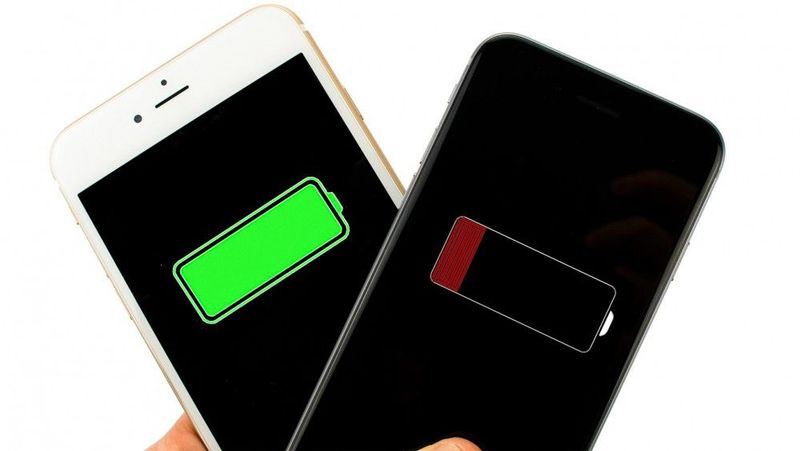The primary features that you probably look for in a smartphone are the screen size, battery power, and camera, perhaps in that order of decreasing priority. However, from the stand point of functionality, battery life clearly has the most significant impact. When your battery is dead, nothing else works in your phone! We are now able to do much more with our phones, which is a situation that leads to more voracious consumption of battery life, thereby driving the demand for longer-lasting batteries.
There are a few challenges with phone batteries. The most basic is the fact that battery technology has not evolved much over the years, to give us significantly longer-lasting batteries; and this situation will probably remain so in the near future. So, you will not be able to get more energy out of the same-size battery pack. Significant efforts to improve battery performance are being directed toward cars, satellites, and other applications where the battery is required to function for many more years than does your phone’s battery. (Your smartphone is not expected to last longer than three or so years.)
Another challenge with phone batteries is the small size. Let’s compare the size of a phone’s battery to that of a car. For example, the Honda Accord has a battery energy of approximately 17,000 Watt-hours (Wh), with a voltage, say, of 13 Volts. If you convert this energy to milliamps-hours (mAh), which is the unit used for mobile phone batteries – because the value is relatively so small – you will get 1,307,692.31 mAh. This works out to approximately 330 times the energy of the battery for iPhone 11, assuming this is approximately equal to 3,969 mAh. (Note that I have used the formula Wh = mAh*voltage/1000 in this conversion arithmetic.)
The voltage rises as you charge your phone’s battery. This is known to put some stress on your phone’s battery, especially during the last 20% of the maximum charge. Thus, to mitigate this stress, you should ideally charge to 80%. For larger-capacity (car) batteries, you can still have a lot of power in the 80%, while you avoid the stress that high voltages put on your batteries. To obtain an all-day run from your smartphone’s battery, you probably have to charge it at the full 100% level, which, as explained above, causes stress from the higher voltage required to top off the battery.
The long and short of this situation for mobile phone batteries is that improvements will have to come from more energy-efficient designs. To answer this call, phone manufacturers are developing power-saving features built into your devices and software that more efficiently manages charging and discharging. Topmost amongst the efforts is the development of fast battery chargers, so that you can at least replenish fast enough to avoid downtime.
Here is what Clifford Colby says in his 20 December 2019 article in Cnet.com on fast-charging of smart phones: “A conventional charger has an output of 5 to 10 watts.” (1 Watt of power is equivalent to 1 Joule of energy in one second.) “Unless there’s some technical flaw with your battery or charger electronics, however, using a fast charger won’t do your phone’s battery any long-term damage. Here’s why. Fast-charging batteries work in two phases. The first phase applies a blast of voltage to the empty or nearly empty battery. This gives you that blazing charge of from 50 to 70% in the first 10, 15 or 30 minutes. That’s because during the first phase of charging, batteries can absorb a charge quickly without major negative effects on their long-term health. For instance, Samsung promises its 45-watt charger can go from zero to a 70% charge in half an hour. Apple says the fast charger that comes with its iPhone 11 Pro can hit a 50% charge in 30 minutes.”
Based on his consultation with battery engineering experts, Colby says that “damage is rare if everything’s well-managed inside.” This is because “a battery’s management system closely monitors the two charge phases and drops the charging speed during the second phase to give the battery time to absorb the charge and avoid issues, which is why it can take 10 minutes to get those last few percentage points.”
It’s certainly good to know that fast-charging your phone’s battery wouldn’t damage it. You should also be aware that, contrary to popular belief, you cannot overcharge your phone battery, say, for example, by keeping your phone constantly plugged in. This is because your battery’s management system is designed to shut of the electrical charge as soon as the battery reaches the 100% charge limit. Incidentally, at present there is no way to stop the charge at the 80% mark, the way electric-vehicle manufacturers do on new batteries.
The hints I gave in the 29 October 2018 article on this topic are still relevant. You should avoid high temperatures; do not drain your battery to zero before recharging, use the chargers that come with your phone, dim your display’s brightness, turn off Wi-Fi and Bluetooth when not in use, restrict background data usage, and be mindful of apps that use the GPS.

 Join Daily Trust WhatsApp Community For Quick Access To News and Happenings Around You.
Join Daily Trust WhatsApp Community For Quick Access To News and Happenings Around You.


